
The vanishing of a golden eagle in the Borders deals a setback to endeavors aimed at bolstering the population in southern Scotland.
For the last five years, an initiative from a Moffat-based center has been underway to amplify eagle numbers in the region.
Authorities are treating the recent occurrence—located between Heriot and Stow—as suspicious, and they are committed to safeguarding these “majestic birds.”
While eagle numbers have reached their highest levels in centuries, the program has encountered its share of challenges.
The origins of it all
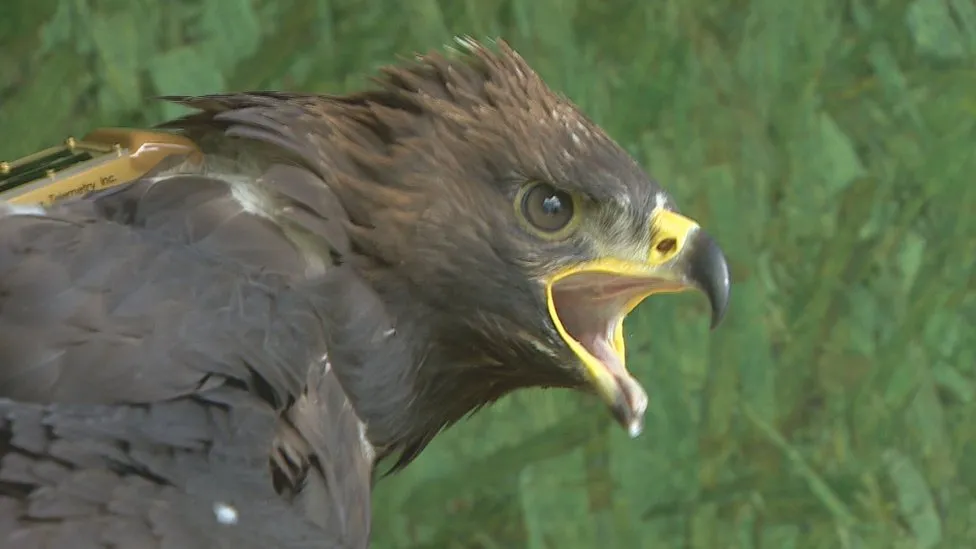
The first chicks from the South of Scotland Golden Eagle Project (SSGEP) took flight in August 2018, over a decade after the project’s conception.
Transported from the Highlands to a confidential location in the Moffat Hills, this initiative aimed to augment the population in an area where only two to four breeding pairs existed at the time.
Cat Barlow, the project manager, described this event as a “highly meaningful” moment, emphasizing the endeavor’s goal to bolster the diminishing eagle population in the skies of southern Scotland.
An Initial Challenge
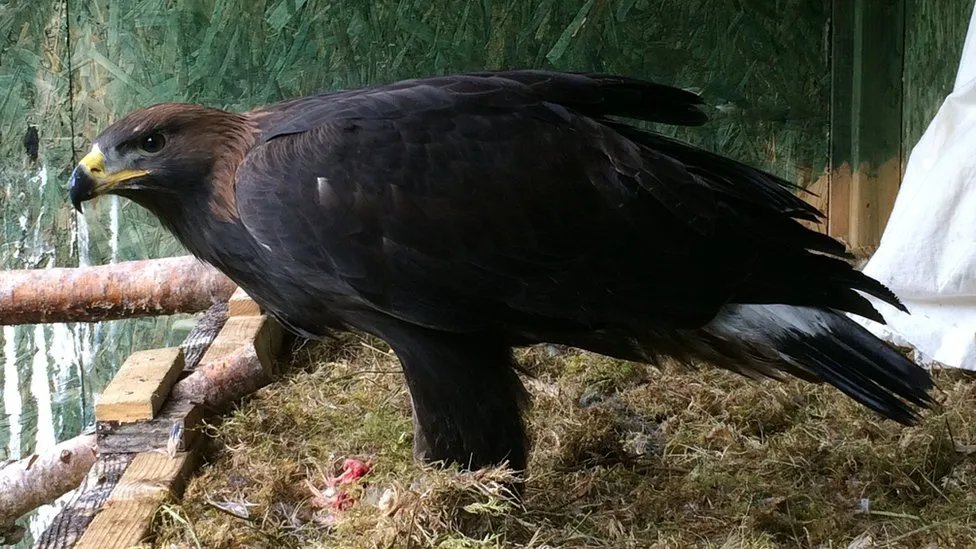
The project was only a year old when an incident occurred where one bird seemingly attacked another, resulting in the latter’s demise.
Scotland’s natural heritage agency, NatureScot, labeled the event as “distressing and highly unexpected,” noting that such behavior had not been observed previously.
A female bird released in 2018 appeared to have targeted a male bird introduced the following year.
The eagle, named Beaky, returned to its release site, displaying “aggressive and domineering” behavior towards three other birds.
Nevertheless, NatureScot affirmed its unwavering commitment to seeing the project attain its objectives.
Doubling up
Despite the setback of losing one of the young golden eagles, the project soared to new heights as additional majestic birds were airlifted from the Highlands. By August 2021, the southern skies welcomed eight more chicks, boosting the relocated total to an impressive 12 and nearly doubling the local eagle population within just three years.
Despite facing delays due to the challenges of the pandemic, the project team expressed sheer amazement at witnessing these magnificent birds gracefully soaring across the skies of southern Scotland. NatureScot chief executive Francesca Osowska hailed the initiative as a “vital force” in the ongoing battle against biodiversity loss and the pressing climate emergency.
Record levels
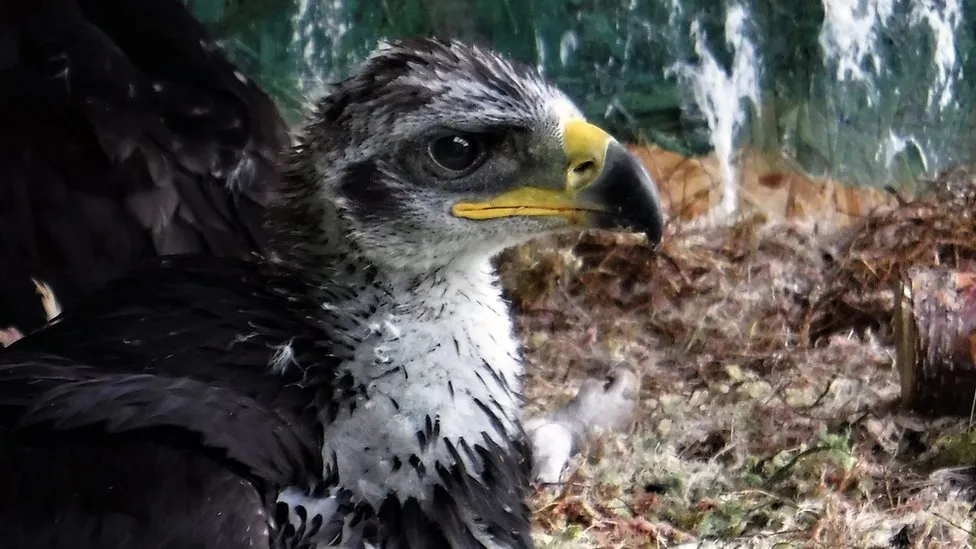
Earlier this year, the golden eagle population in southern Scotland reached a historic high, hitting nearly 50—an unprecedented level in centuries.
While the project initially focused on bringing in chicks, it has pioneered the introduction of older birds, marking the first scheme in the UK to relocate golden eagles aged between six months and three years from one region to another.
Ms. Barlow highlighted that the success of relocating these older eagles would be closely monitored, setting a precedent for similar projects.
Simultaneously, the SSGEP engaged thousands of people through various initiatives, and a vibrant festival celebrating the golden eagle took center stage in Moffat.
Turbine protection
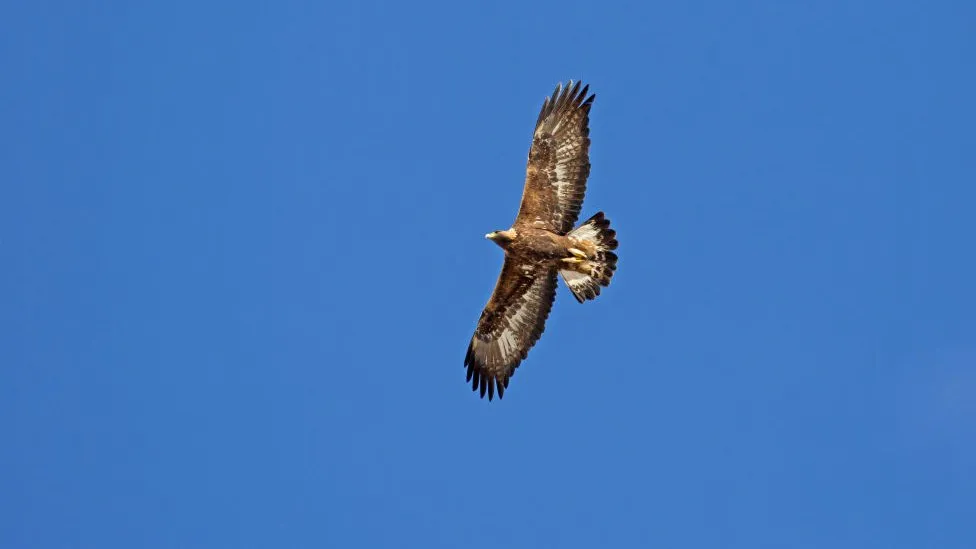
The dimensions of a wind farm in the area were reduced due to concerns about its potential impact on the eagles.
Plans for a significant wind farm near Moffat were downsized in January of this year due to concerns about potential impacts on golden eagles.
Community Windpower initially aimed to erect 75 turbines at Scoop Hill but revised the plan to 60 after engaging in consultations.
The RSPB opposed the initial proposals, citing worries about collision risk and habitat loss for the birds.
The company expressed optimism that the proposed changes could effectively address these concerns.
Unexplained Fatality and Vanishing Act
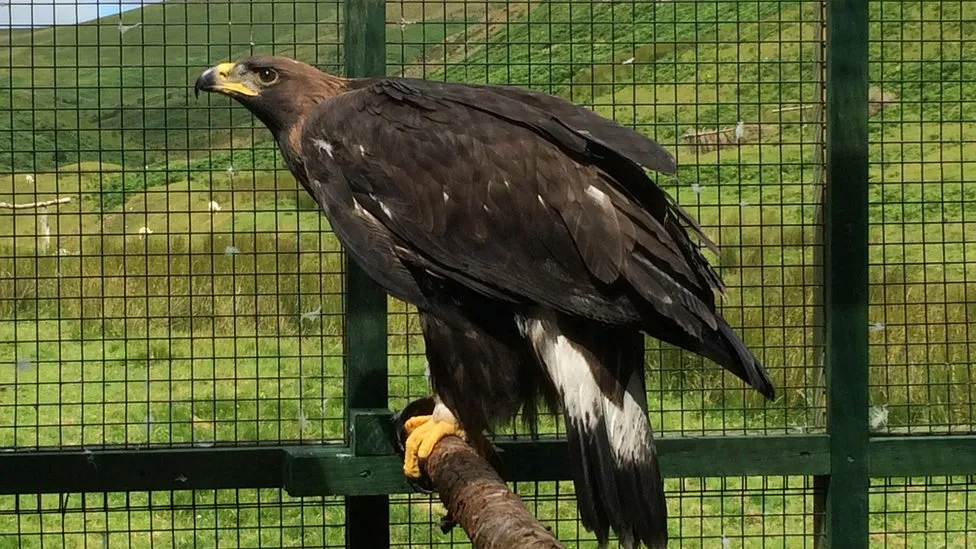
When a bird was discovered deceased on a south of Scotland estate in February this year, it triggered an extensive investigation into the cause, raising concerns of potential poisoning or avian flu.
After ruling out both possibilities, it was determined that the bird, named Sula, had been “very fit” prior to its death.
The SSGEP highlighted that this incident demonstrated that golden eagles, like any species, could suddenly perish for various reasons, including natural causes.
Despite this, the project expressed confidence in the high survival rate in southern Scotland and hoped for its continued success in the years ahead.
Following the loss of one bird, another has now gone missing.
The female eagle, Merrick, was last sighted in the Borders on October 12 in an area between Heriot and Stow.
Police suspect harm has befallen her and are actively investigating the circumstances.
Undeterred by this setback, the golden eagle project, along with its partner organizations, remains committed to intensifying efforts to boost golden eagle numbers in the region.
